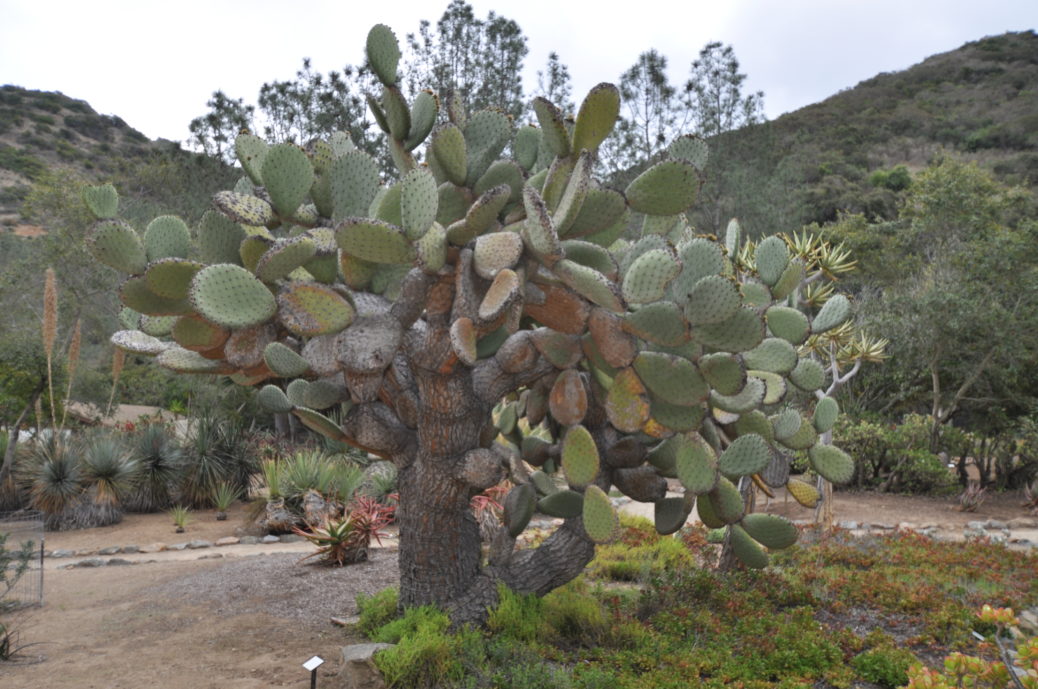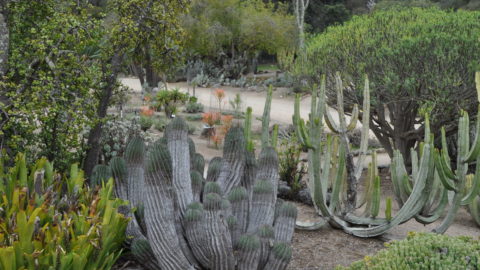THE WRIGLEY BOTANICAL GARDEN ON SANTA CATALINA ISLAND, is home to some 500 native and non-native plant species from all corners of the globe. The garden is located about one and half miles west of Avalon, on about 40 acres within Avalon Canyon. A bus service runs to the garden every thirty minutes, but walking is also an option for those that have some extra time and are able to walk a moderate incline.
The temperate maritime climate of the island is characterized by warm and dry summers, mild winters, and abundant fog. The fog is caused as northwesterly winds are cooled as they move across the cold waters of the California Current which moves southward along the Pacific Coast. Because Santa Catalina receives only 13 inches of annual rainfall on average these plants depend on fog for the moisture they need. Many unique plant species have evolved in the California Channel Islands as a result. However, such a climate is also highly favorable to plants that occur naturally in far off places such as South Africa and South America. The garden showcases many plants from these continents as well as many species from mainland Mexico and peninsular Baja California.
The first garden that one encounters includes primarily those species endemic to California’s Channel Islands. Most notable in early April was the rare, Santa Catalina mahogany (Cercocarpus traskiae), and the Southern Island mallow (Lavatera assurgentiflora var. glabra).
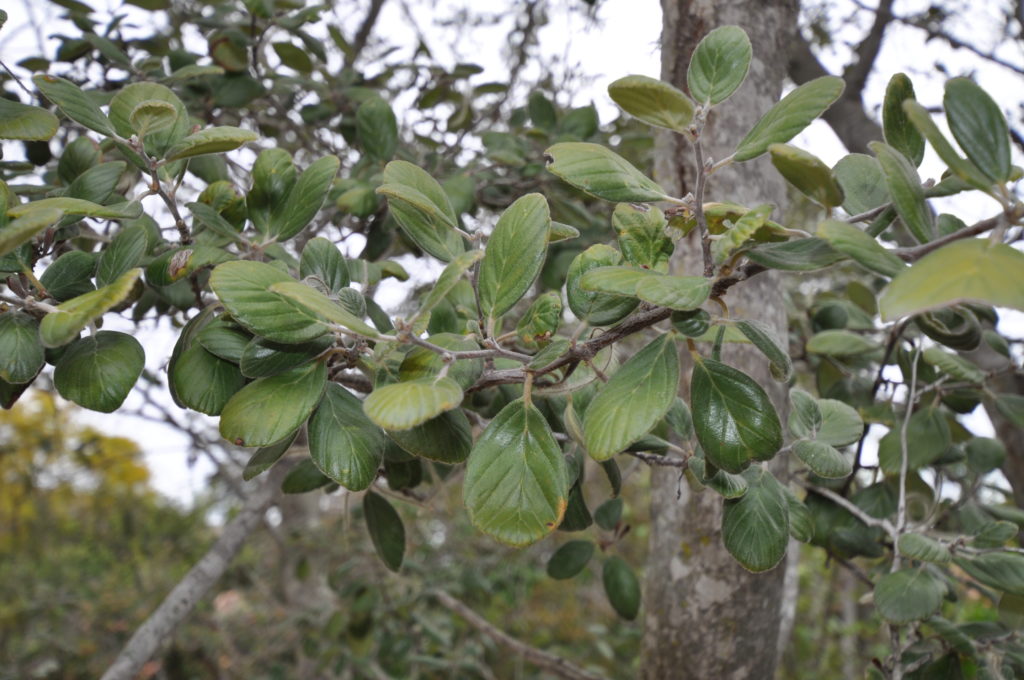
Cercocarpus traskiae, Wrigley Botanical Garden
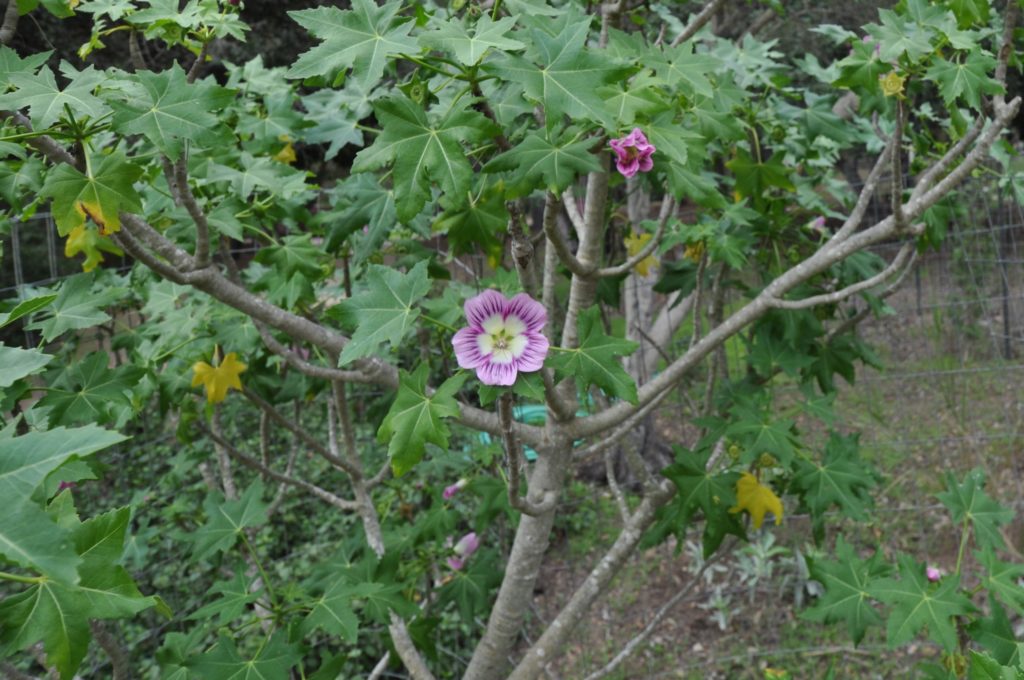
Lavatera assurgentiflora var. glabra
The Desert Garden is quite remarkable. Numerous, mature specimens of cacti and other succulents, from Baja California and mainland Mexico to Central and South America, can be seen. A beautiful red-flowered climbing aloe (Aloe ciliaris) from Africa, for example, was in full bloom in early April. Succulent plants are, perhaps, best described as being able to survive extended periods of drought. Succulent leaves, stems, or tubers are generally fleshy and capable of storing moisture. Along with cacti, the garden boasts other succulent plants such as agaves, euphorbias, and yuccas.
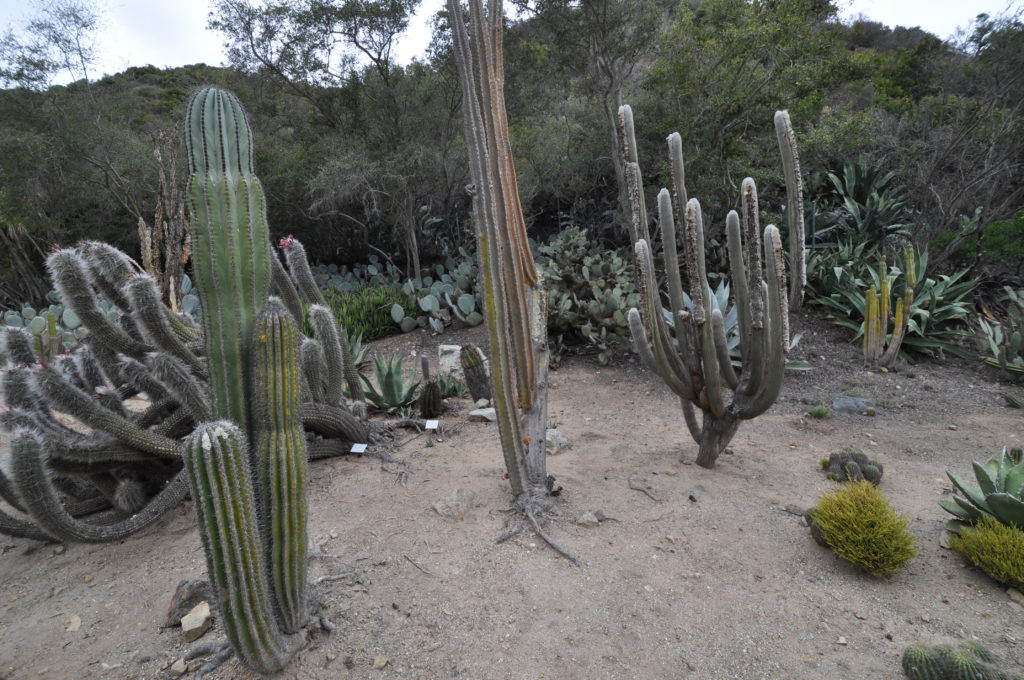
Desert Garden Collection, Wrigley Botanical Garden
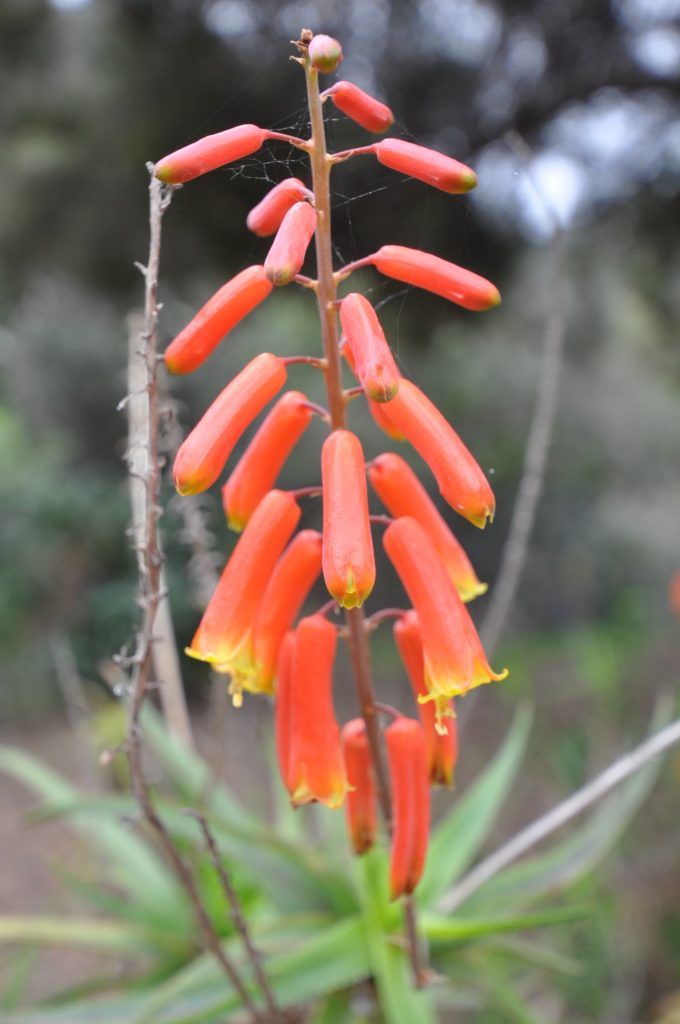
Aloe ciliaris, Wrigley Botanical Garden
These cool plants can be seen at the garden:
Aeonium arboreum ‘Schwarzkopf’
Agave americana var. expansa
Agave filifera
Aloe arborescens
Aloe ciliaris
Arbutus unedo
Bergerocactus emoryi
Butia capitata
Cephalocereus senilis
Cercocarpus traskiae
Chamaerops humilis
Cleistocactus strausii
Crossosoma californicum
Dasylirion wheeleri
Dracaena draco
Echinocactus grusonii
Echinopsis pasacana
Euphorbia coerulescens
Euphorbia ingens
Euphorbia nobilis
Euphorbia tirucalli
Ferocactus glaucescens
Furcraea macdougalii
Lavatera assurgentiflora var. glabra
Lyonothamnus floribundus var. floribundus
Opuntia robusta
Opuntia streptacantha
Oreocereus leucotrichus
Oreocereus trollii
Portulacaria afra
Rhus integrifolia
Ruschia granitica
Yucca guatemalensis
Check these references out to learn more:
Endemic Species. (2018). Catalina Island Conservancy. Retrieved 13 April 2018 from <https://www.catalinaconservancy.org/index.php?s=wildlife&p=endemic_species>
Thorne, Robert F. (1967). A Flora of Santa Catalina Island, California. Aliso: A Journal of Systematic and Evolutionary Botany: Vol. 6: Iss.3; 1-77. Ranch Santa Ana Botanic Garden. Retrieved 14 January 2018 from <http://scholarship.claremont.edu/aliso/vol6/iss3/2>
Wride, Nancy. (2013). A Catalina Oasis Offers the Mortal and the Vital. LA Times. Retrieved 14 January 2018 from <http://articles.latimes.com/2003/jun/14/local/me-outthere14>
